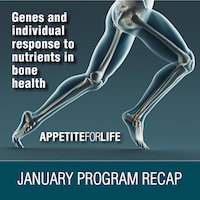Environment and Nutrition
Beginning at conception, environmental factors in health can accumulate over a lifetime and be from sources as broad as geographic location and economic status to specific external sources including physical activity, occupation, risky behaviors and diet. But some of these factors, especially in terms of diet are highly modifiable.
Important research is now being conducted on this concept of the “exposome,” as an environmental complement to the human genome. NRI researchers are learning how diet and other environmental exposures interact with disease and affect responses to treatment.
Publications
Environment and Nutrition Publications
2020
Precision (Personalized) Nutrition: Understanding Metabolic Heterogeneity. Zeisel S
Perspective: Dietary Biomarkers of Intake and Exposure-Exploration with Omics Approaches. Zeisel S
2019
Obesity and Cancer Metabolism: A Perspective on Interacting Tumor-Intrinsic and Extrinsic Factors. Hursting S
When less may be more: calorie restriction and response to cancer therapy. Hursting S
Energy balance and obesity: what are the main drivers? Hursting S
Metabolic Reprogramming by Folate Restriction Leads to a Less Aggressive Cancer Phenotype. Krupenko S
Early-Life Predictors of Fetal Alcohol Spectrum Disorders. May P
Alcohol’s Dysregulation of Maternal-Fetal IL-6 and p-STAT3 Is a Function of Maternal Iron Status. Smith S
2018
Energy balance and gastrointestinal cancer: risk, interventions, outcomes and mechanisms. Hursting S
Research Strategies for Nutritional and Physical Activity Epidemiology and Cancer Prevention. Hursting S
2017
Metabolic Reprogramming by Folate Restriction Leads to a Less Aggressive Cancer Phenotype. Krupenko S
Contribution of Dietary Supplements to Nutritional Adequacy in Various Adult Age Groups. Zeisel S
2016
CerS6 Is a Novel Transcriptional Target of p53 Protein Activated by Non-genotoxic Stress. Krupenko N
Abnormal Eating Behaviors Are Common in Children with Fetal Alcohol Spectrum Disorder. Smith S
Impact of a western diet on the ovarian and serum metabolome. Sumner S
Metabolomics enables precision medicine: “A White Paper, Community Perspective”. Sumner S
Related News
January AFL Program Recap: “Genes and Individual Response to Nutrients in Bone Health”
January 22, 2020 – If you missed January’s Appetite for Life presentation by Saroja Voruganti, PhD, you can catch up. Click through to this post and watch the entire program on video. The live presentation took place at Rowan-Cabarrus Community College in Kannapolis on Thursday, January 16, 2020.
Herman Freeman III
Research Technician, Sumner LabMr. Freeman joined the NRI as a research technician in the Sumner Lab in October 2019. He is learning the foundations of, and expanding his knowledge of, metabolomics research and how it is applied in fields today. He works...
Effect of Egg Ingestion on trimethylamine-N-oxide Production in Humans: A Randomized, Controlled, Dose-Response Study
Carolyn A Miller 1, Karen D Corbin 1, Kerry-Ann da Costa 1, Shucha Zhang 1, Xueqing Zhao 1, Joseph A Galanko 1, Tondra Blevins 1, Brian J Bennett 1, Annalouise O’Connor 1, Steven H Zeisel 1
Microbiota-Dependent Metabolite Trimethylamine N-Oxide and Coronary Artery Calcium in the Coronary Artery Risk Development in Young Adults Study (CARDIA)
Katie A Meyer 1, Thomas Z Benton 2, Brian J Bennett 3, David R Jacobs Jr 4, Donald M Lloyd-Jones 5, Myron D Gross 6, J Jeffrey Carr 7, Penny Gordon-Larsen 8, Steven H Zeisel 9
Trimethylamine N-Oxide, the Microbiome, and Heart and Kidney Disease
Steven H Zeisel 1, Manya Warrier 1
Protein Intake at Twice the RDA in Older Men Increases Circulatory Concentrations of the Microbiome Metabolite Trimethylamine-N-Oxide (TMAO).
Mitchell SM1, Milan AM2,3, Mitchell CJ4,5, Gillies NA6, D’Souza RF7,8, Zeng N9, Ramzan F10, Sharma P11, Knowles SO12, Roy NC13,14,15, Sjödin A16, Wagner KH17, Zeisel SH18, Cameron-Smith D19,20,21.


